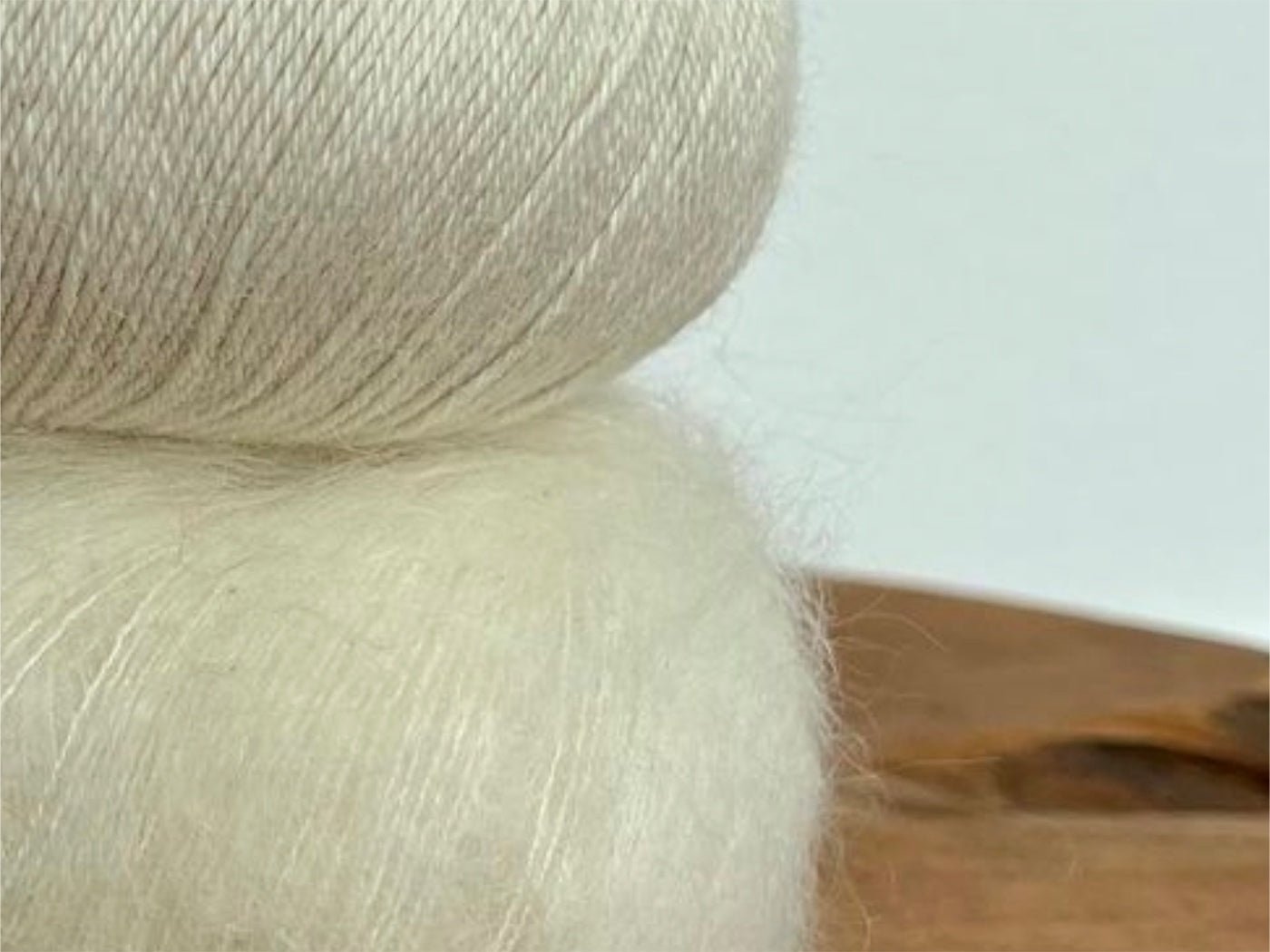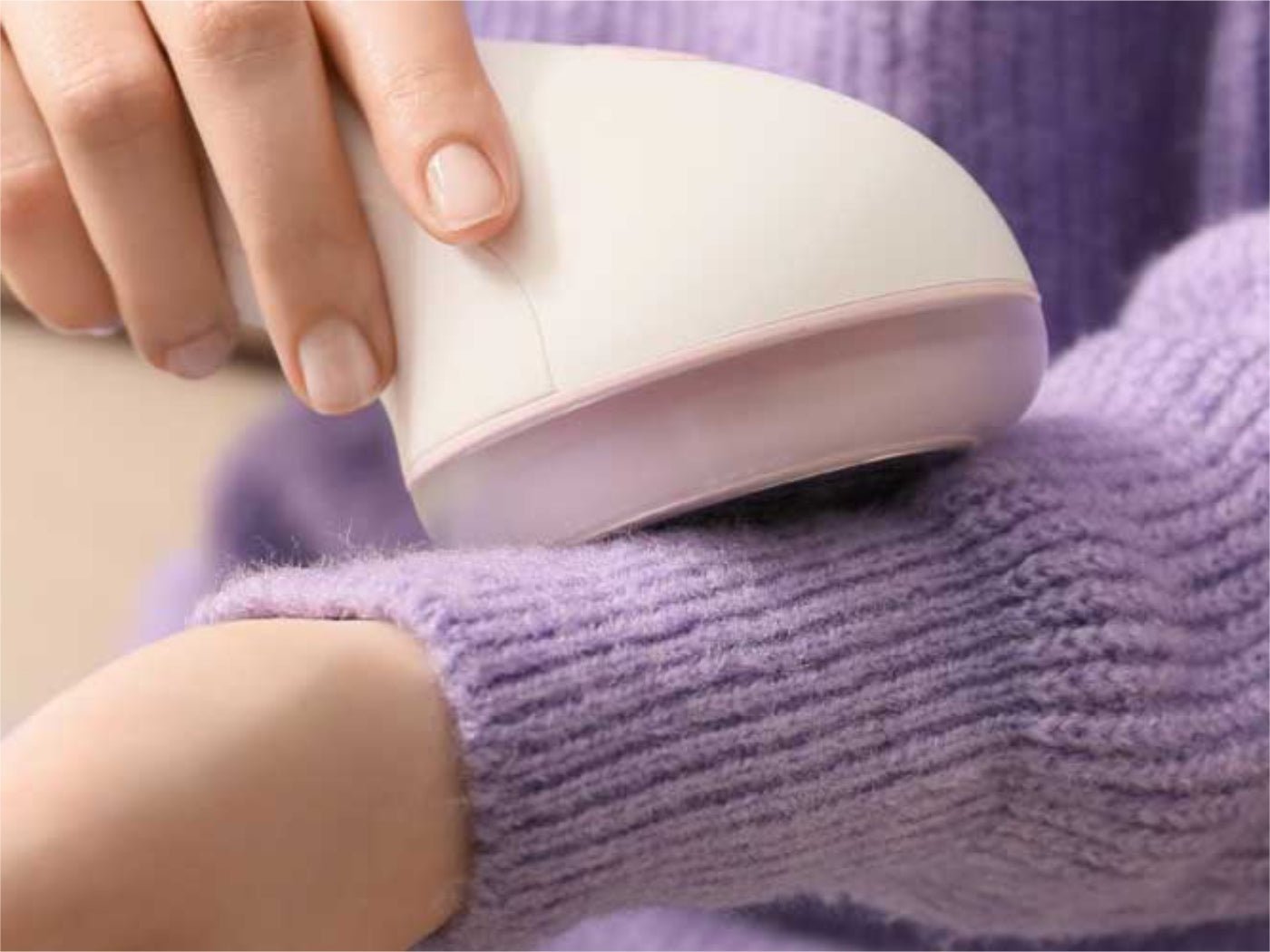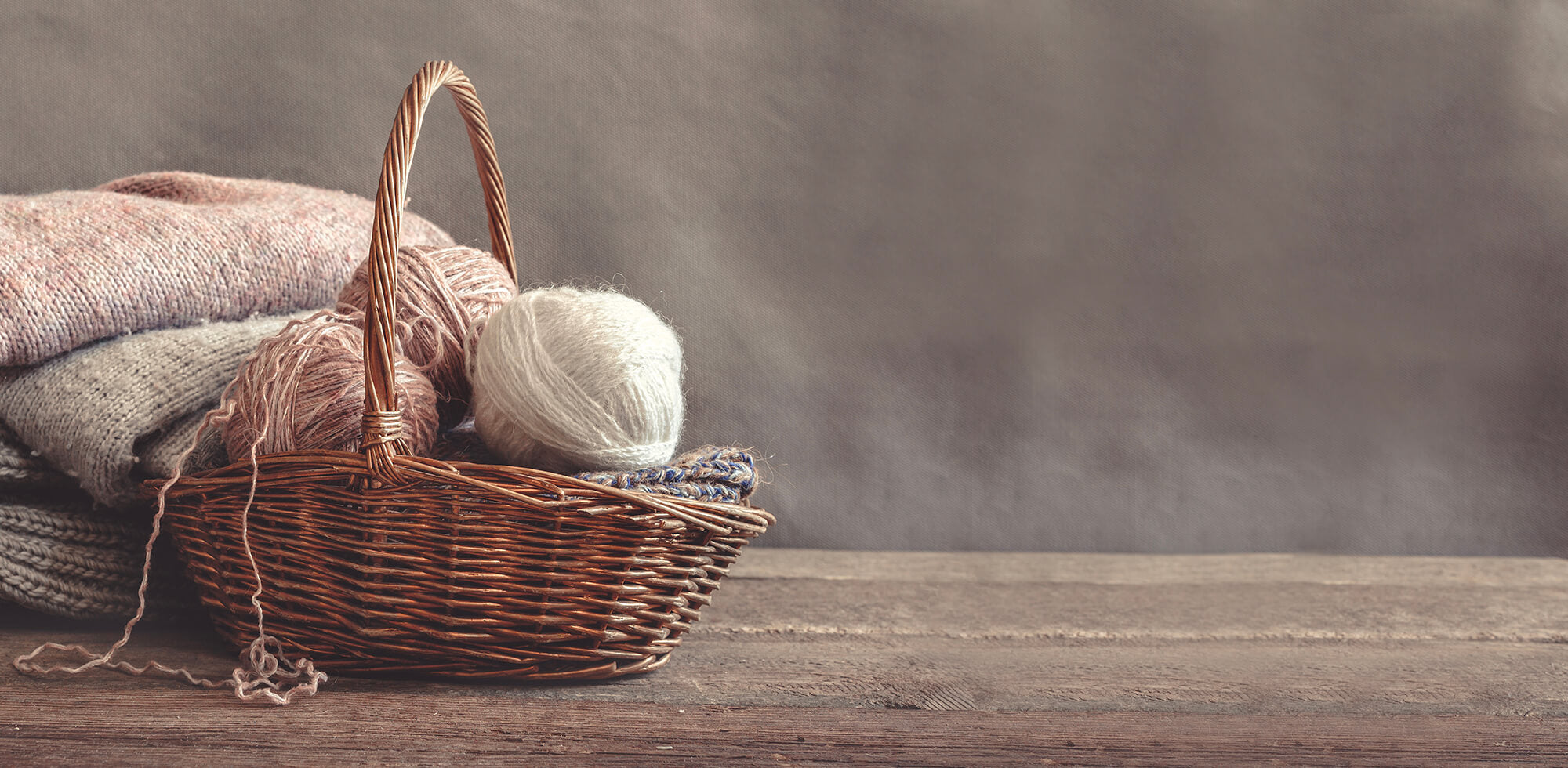By Sandra Sonnenburg
Clarissa Schellong, known to many as Cozyknits, is our guest in today's interview.
In the past year, Clarissa has really shaken up the knitting world with her knitwear designs: classic, timeless yet with a certain pizzazz like the Seedy Top. A lot of her designs are cuddly, soft, and cosy, very cosy.
Clarissa's first book has just been published by “EMF Verlag”: "Unisex-Pullover stricken" (Knitting Unisex Pullovers)- it includes 16 patterns in a boyfriend look, a few of which are made with our natural yarns.
A very warm welcome Clarissa! Thanks for taking the time to talk to us!
For those who don´t know you yet: Would you like to tell us a bit about yourself?
Of course! My name is Clarissa. I am 38 years old, and I live with my husband and my little daughter in Munich, which I think is the most beautiful city ever. In real (non-knitting) life, I run our parents' family business, together with my brother, which offers street cleaning, winter service, transportation services and building management services.
On Instagram, you reveal that your first knitted sweater was made in January 2020. How did you start knitting? Who taught you?
I've basically been knitting my whole life. My mum taught me. For many, many years, and especially during my childhood and adolescence, I mainly knitted smaller projects such as hats, scarves or clothes for my beloved teddy bear. After completing my design studies and knitting a few accessories for my graduation project, knitting was soon a thing of the past. It wasn't until the birth of my daughter that I got back into knitting and I started to tackle larger projects like pullovers and cardigans.
Can you describe the process you went through from creating your first pullover to becoming a knitwear designer? What was your first pattern and how did you get the idea to write and publish it?
Because of my current job, I don't think many people know or even suspect that I studied fashion design at the AMD (Akademie Mode & Design) in Munich. After graduating, I worked for almost seven years for various fashion companies, first in design, then in creative buying, always in the knitwear department. I've always loved knitwear - for me it's the knitwear that brings a collection to life because it gives it structure!
So, the way to my first design wasn't far at all. Designing was a home game for me. After working on the first few patterns from others, it just came out of me; I started knitting my own designs out of my head.
My dear friend Nadine (@mrs.deer.knits) is the one who pushed me to write patterns, publish them and offer them for sale. She was the one who said to me: "Just do it! Why not? You have absolutely nothing to lose and so much to gain..." and that's it!
Many of your designs show structural patterns in rib, brioche or purl stitch patterns and are very comfortable and cosy. What plays a bigger role in your designs: your personal taste or current fashion trends?
I believe that everyone who has studied design or has a feeling and an aptitude for colours, shapes, proportions and design will develop their own style over the years. So, I follow my own style. Style is something that outlasts current trends. It´s an overarching, timeless direction that is certainly always changing and converging with current trends, but always remains true to its essence. It´s like handwriting: My goal is that in the future people will recognise my “handwriting”, my style, even though every part is new and different in its own way.

What inspires you? Where do you get your ideas from?
That varies a lot! Sometimes, I see a tiny detail somewhere in passing (a piece of textile…. often other things as well) and, all of a sudden, a whole new piece spins out of my head. I like to transfer details and shapes from other product groups to knitwear and thus create something completely new.
Very often, when I have a ball of yarn in my hands, this yarn will determine the shape of the finished pullover in terms of feel and look. That sounds crazy, but that's what it looks like in my head at that very moment.
Do you start knitting right away, or do you work according to the old school method with drawings? What is your design process like?
I only start knitting when the design is “finished” in my head. I then visualise every stitch in front of me, every detail, every transition, I usually calculate everything in my head and remember the number of stitches... and when the piece is finished in my head and my fingers are itching terribly to “finally” cast on, then it usually goes very quickly.
I very rarely have to unravel. Fortunately, that is almost never necessary because I simply don't like doing it. I knit a lot instinctively and somehow just know where the pocket has to be, where a certain detail goes or how many short rows are just right. And then, I knit this out of my head in one shot.
It's a challenge then (as you can imagine) to put all this on paper after knitting. Somehow, in that moment, I don't add anything new to the design. Do I take notes? No, none.
For many, knitting (creative hobbies in general) means a retreat from the complex, fast and stressful everyday life into a zone where you can create something with your own hands and often out of beautiful materials and where you retain control over your own actions and the result. What role does knitting play for you today as a successful designer? Is it relaxation or is it work?
The design process and the knitting itself is absolute relaxation for me - I really need it. The images in my head, the inspiration, the “thinking-the-pieces-right” and then the steady, calm movement while knitting, seeing something emerge, that grounds me, relaxes me, and makes me happy.
Writing the patterns, doing administrative work, maintaining the website, taking care of pattern support - that feels like work, and I also see it as work. But it's also part of it.
In addition to the popular hobby of knitting, your book “Knitting Unisex Pullovers” takes up another current topic: unisex means “cross-gender”, i.e. not specially designed for men or women. Society is currently very concerned about this topic in debates about gender justice and equality. Was this background decisive for the idea for the book?
The idea for the book came from my editor, Melanie Kowalski from “EMF Verlag”. I'm sure that the social movement you mentioned strongly influenced the idea for the book. She approached me about my Lounge Pullover – a design that I have in a small variation for women and men. I think she simply saw her idea as well taken up here and therefore wanted to win me over for the book. I thought the idea was sensational right from the start. It captures the spirit of the times and I believe it sends exactly the right message!

Can you tell our readers something about the process of creating a knitting book?
As I mentioned before, the publisher approached me with the general concept and a rough colour concept – I was completely free about everything else!
We had agreed that there should only be tops in the book and I was given a ballpark number regarding how many patterns to include. I found that super exciting, too, because given the number of patterns, I believe this to be very valuable content for a book.
It's been many years since I've designed a complete collection. All the patterns I have designed so far are basically individual pieces. I found it incredibly exciting and nice to build up a real collection again, with different yarns, styles, shoulder constructions and collar shapes, taking into account different levels of difficulty in knitting and different audience target groups.
I then made a rough sketch of the collection and outlined the yarns, yarn manufacturers and colours for each piece. So, I can really say that the book is 100% mine and bears my unadulterated handwriting. I find that incredibly beautiful!
In addition, it made me very happy to be completely free in my choice of yarns and I am still really happy (and also a little proud...) that Pascuali also agreed to support me. That's a lot of trust that was placed in me!
When all the designs were decided upon, I wrote down all the patterns, partly knitted them myself, partly passed them on to my knitters and we all let the needles do their work! What was completely new for me was that I only really got my hands on some pieces for the first time when they were finished. I was completely blown away to see that what I had thought through in my head beforehand and then written down turned out to look exactly as what I had imagined. Those were some of the most beautiful moments of making of the book.
What makes a yarn a favourite yarn for you, and which criteria are decisive for you to create a pattern with a specific yarn?
I honestly have to admit that I love high-quality yarns. You put so much love, effort and time into a hand-knitted piece that you should (if at all possible) use high-quality materials for it. In everything else in my life, I prefer quality to quantity. I feel the same about yarns. So, my favourite yarn would always be a high-quality yarn. In addition, I like pure natural yarns the best.
For my designs, I mostly use clear yarns with a good stitch definition because I work a lot with patterns and they come out best that way. Often the yarn finds me (not the other way around). Then I just have to have it! I think every knitter is familiar with this phenomenon. There are other things that attract me to a yarn: sometimes it's a specific feel that I find wonderful; or a very specific colour or colour blend that I must have; other times, it´s something as simple as the label, which I find so beautiful that I buy the yarn.
Is there something you particularly appreciate about Pascuali yarns?
For me, Pascuali is simply the epitome of high quality. I still remember as if it were yesterday when I held the first sample package from Pascuali in my hands - apart from the fact that I could hardly believe that this was really happening to me and that I had received a package from Pascuali (!!! ) every single ball was simply beautiful and of such high quality! Each in its own way, some delicate, some shiny, some robust, but always incredibly high quality. I still have all those first sample skeins with the colour cards in a separate box and I love browsing through them, mixing and matching colours, comparing compositions... It just makes me happy to work with your yarns!
What is your favourite yarn from the Pascuali range and why?
My absolute favourite is the Organic Cashmere Worsted. I had the incredible privilege of knitting a pullover with it for my book. This is a pullover I know I'm going to love, not just today and tomorrow, but ten years from now and I know this yarn will still be beautiful then. That's what counts when it comes to knitting!
Apart from this very valuable treasure, I also really like Pinta! For me, Pinta is an absolute all-rounder that goes with many styles in both summer and winter. Oh, and, of course, I also like Alpaca Fino... I love the colours and how wonderfully soft it feels!
What are your future (knitting) plans? What can we look forward to in the future?
Oh, I actually have many, many designs in the pipeline (in my head...), all just waiting to be knitted! I think there will be something for everyone - cardigans, pullovers, accessories, and everything that goes with it.
And finally: Can you tell us a fun fact about yourself?
I have a truck driver's license and when it snows a lot in Munich, I'm regularly out and about clearing roads myself!
Thank you, Clarissa, for your time and your fascinating answers!
Follow Clarissa here on Instagram – You can find her patterns here in our Shop.Her book Unisex-Pullover stricken from EMF Verlag is available at local bookstores.




